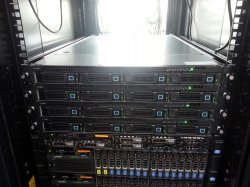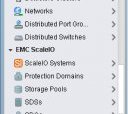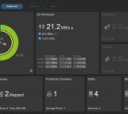Establish A Data Storage Server
 Cluster Node: domestic production server Etegro (2 AMD Opteron 6320, 16 GB RAM, 4 HDD)
Cluster Node: domestic production server Etegro (2 AMD Opteron 6320, 16 GB RAM, 4 HDD)The data storage systems currently used in practice in Russia are conditionally divided into three categories:
- Very expensive high-end CCB;
- Middle ranges (triing, HDD, hybrid decisions);
- And economic clusters based on SSD Massives and HDD Massives from " household " disks often collected by their hands.
And it's not that the last decisions are slower or less reliable than the Hayland. It's just another approach that doesn't always fit for the same bank, for example. But it's good for almost all the middle business or cloud decisions. The general point is that we take a lot of cheap, little, no, no, no, no, no, no, no. Example is the domestic RAIDIX, the creation of Perebourg colleagues.
 And this market is where the EMC, known for its damn expensive and reliable soft-ware, is able to raise the VMware farm and the virtual SCB, and any additive on the same x86 servers. And there's a story on Russian production servers.
And this market is where the EMC, known for its damn expensive and reliable soft-ware, is able to raise the VMware farm and the virtual SCB, and any additive on the same x86 servers. And there's a story on Russian production servers.
Russian servers
The original idea was to take our domestic iron and lift the missing pieces of infrastructure on it. For example, the same virtual machine rangers, VDI servers, additive storage systems and apple-servers.The Russian server is a miraculous jellyfish that is 100 per cent collected in Russia and is 100 per cent domestic under all standards. In practice, separate parts from China and other countries, buy domestic wires and collect on the Russian Federation.
It's not that bad. Work is possible, although reliability is below the same HP. But it's compensated by the price of iron. Next, we come to a situation where the least stable iron is to be compensated by a good superintendent. At this stage, we started experimenting with EMC ScaleIO.
At this stage, we started experimenting with EMC ScaleIO.
Experience has been good, experiments have revealed that iron is not important. I mean, you can be replaced with a proven, famous brand. It'll get a little more expensive, but less service trouble.
As a result, the concept has changed: now we're just talking about the benefits of ScaleIO in different irons, including (and above all) from the lower price segment.
But to the point: test results.
That's the principle of ScaleIO's work. We're taking the earrings, putting them underneath the discs (e.g. the same SSD knockers that were designed to replace HDD at our time) and connecting them to the cluster: The configuration we tested in the lab this time is the integration of EMC ScaleIO and VMware. The Etegro colleagues graciously loaned us 4 servers with 2 AMD Opteron(tm) Processor 6320 and 16 GB operational memory in each. There were four CDs in each. It's not the coolest configuration, I'd rather serve 25 CDs at 2.5 inch, but work with what is, not what I want.
The configuration we tested in the lab this time is the integration of EMC ScaleIO and VMware. The Etegro colleagues graciously loaned us 4 servers with 2 AMD Opteron(tm) Processor 6320 and 16 GB operational memory in each. There were four CDs in each. It's not the coolest configuration, I'd rather serve 25 CDs at 2.5 inch, but work with what is, not what I want.
Here are the servers at the desk:
All the disks on the server, I divided it into three parts:
- 10 Gb for ESX. That's enough.
- 30 GB for internal needs of ScaleIO, but later.
- Everything else will be given through ScaleIO.
The first thing to do is set up a VMware. We'll be on the grid so fast. It's not a new task, but a virtual PXE server car has long taken a well-deserved place in my laptop.
As you can see, there's a lot of test equipment in our lab. There are four more bars on the right and another 12 on the first floor. We can collect almost any staircase at the request of the customer.













